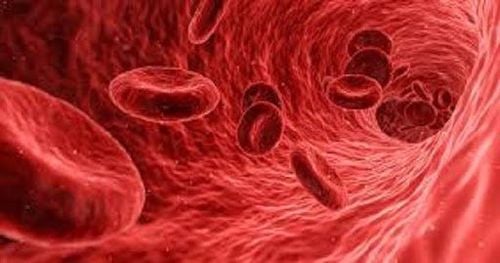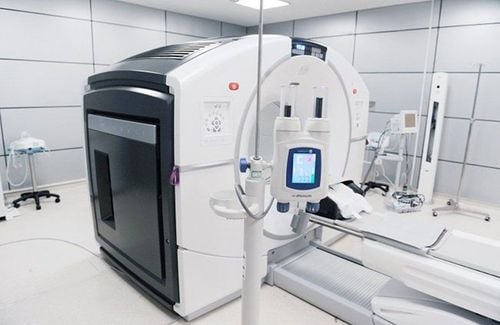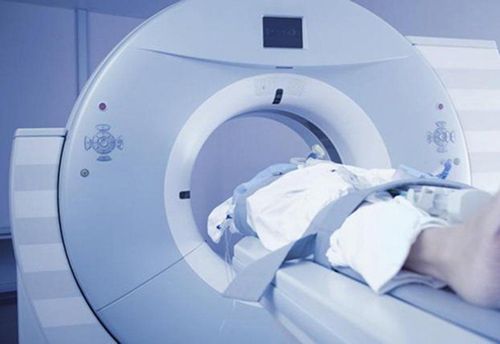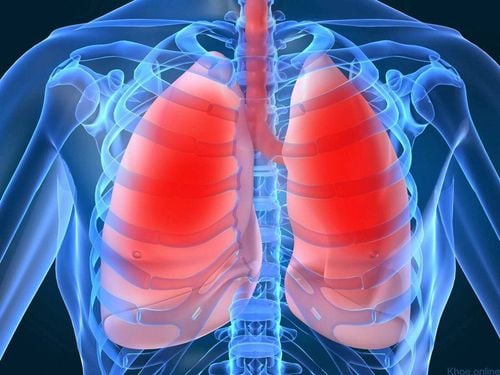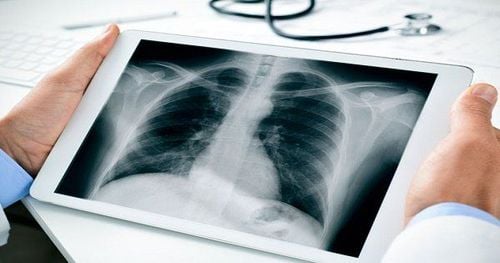This is an automatically translated article.
The article is professionally consulted by MSc, BS. Dang Manh Cuong - Doctor of Radiology - Department of Diagnostic Imaging - Vinmec Central Park International General Hospital.Abscess of intra-abdominal organs, if left untreated, can lead to sepsis or septic shock. Drainage of abdominal abscess under the guidance of enhanced X-ray is an effective treatment method for patients.
1. Overview of abscesses of intra-abdominal viscera
1.1 What is an abdominal abscess?
An abscess is an inflammatory pocket of tissue that is filled with pus. Abscesses can appear anywhere on the body. Abdominal abscess (intraperitoneal abscess) is a collection of pus or infected material in the abdomen. Abdominal abscess can be distributed in the middle abdomen, the back part of the abdomen or around the organs in the abdomen such as liver, pancreas, kidney,...Abdominal abscess is usually caused by invading bacteria. enter the abdomen as a result of trauma, intestinal rupture, or following abdominal and gastric surgery. When having an abdominal abscess, patients often have symptoms such as: Feeling tired, abdominal pain, fever, nausea and vomiting, loss of appetite.
1.2 Diagnosis and treatment of abscesses of intra-abdominal viscera
The symptoms of abdominal abscess are not specific, easy to confuse with symptoms of some other diseases. For an accurate diagnosis, the doctor needs methods such as blood tests, X-rays of the abdomen, abdominal ultrasound, computed tomography (CT scan), magnetic resonance imaging (MRI) or sample analysis. abscess translation.To treat abscesses of intra-abdominal viscera, drainage is the first choice to drain pus from the abscess. In this procedure, the doctor will use X-ray, computerized tomography, ultrasound or digital background eraser to inject a needle through the skin, go directly into the abscess, and then use a pump to drain the fluid. . After draining the abscess, the doctor will send a sample of the fluid to a laboratory for analysis and an indication for appropriate antibiotic use.
In addition, some other cases require surgery to: Clean the abscess, if the abscess is difficult to reach with a needle aspiration or an intra-abdominal organ has ruptured. During surgery, the doctor will put the patient under general anesthesia, then make an incision in the abdomen to locate the abscess. Then, the doctor cleans the abscess, attaches a drainage tube to drain the pus out. The drain is left in place until the abscess heals.

Chụp MRi giúp chẩn đoán u áp-xe các tạng trong ổ bụng
2. Introduction to drainage techniques for abscesses of lower abdominal viscera with enhanced radiographs
2.1 Designation
Cases of abscesses in different organs in the body such as liver, kidney, spleen, pancreas, perirenal, intra-abdominal, retroperitoneal or intramuscular abscess.2.2 Contraindications
Patients with coagulopathy, prothrombin rate less than 60%, platelet count less than 50 G/l; Patients with severe hepatic, renal, respiratory and circulatory failure.2.3 Preparation before implementation
Performers: Specialist doctors, assistant doctors, radiology technicians, anesthesiologists, nurses; Technical facilities: Television X-ray machine; ultrasound machine with flat and curved transducers; film, film printers and image storage systems; lead vest, apron, X-ray shielding, antibacterial plastic bag covering the ultrasound probe; Medicines: Local anesthetics or general anesthetics (if indicated), water-soluble iodine contrast agents, skin and mucosal antiseptic solutions; Common medical supplies: Syringe; physiological saline or distilled water; gloves, gowns, caps and surgical masks; cotton, gauze, surgical tape; sterile interventional kit (knife, scissors, tongs, metal bowl, bean tray, tool tray); medicine boxes and emergency equipment for iodine contrast drugs; Special medical supplies: Kim Chiba; the conductor corresponds to the Chiba needle; drug pump connection; pigtail drainage catheter; sutures to fix the catheter; Patient: The procedure is explained; fast and drink before 6 hours, can drink less than 50ml of water; In the intervention room, the patient lies on his back, prone or on his side depending on the drainage position, at the same time installing a monitor (breath rate, blood pressure, pulse, electrocardiogram, SpO2), disinfecting the skin and then covered with a sterile towel. hollow. Can give the patient sedation if too excited, do not lie still; Test sheet: Includes medical records, order of procedure, X-ray film, magnetic resonance, computed tomography if any.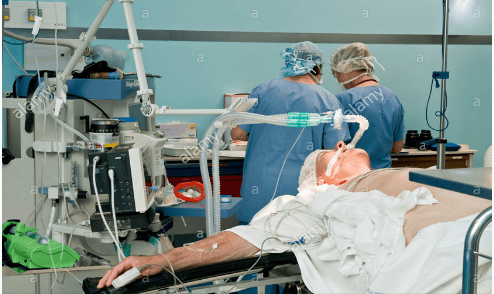
Bệnh nhân có thể được chỉ định gây mê toàn thân
2.4 Implementation Procedure
Pre-intervention assessment: Ultrasound and/or computed tomography to evaluate abscess; determine the location, limit and nature of the abscess. Then mark the expected site of access to the abscess; Exposing the way in: Wide antiseptic at the needle puncture site, local anesthesia, small incisions on the skin with a surgical knife; Accessing the abscess: Insert a guide needle through the skin incision into the abscess. Next, inject contrast material into the abscess cavity to confirm that the needle is already inside the abscess. Then, drain fluid from the abscess to culture, isolate microorganisms, make an antibiotic chart, and then insert the guide wire into the abscess cavity through the guide needle; Insertion of a drainage tube: Insert a catheter into the abscess cavity by following the guide wire to widen the inlet, the size increases gradually depending on the diameter of the catheter intended to be placed. Next, insert the pigtail drain into the abscess by following the lead, fix the catheter with a surgical suture needle. Finally, use sterile physiological saline to flush the abscess until the fluid is clear.2.5 Evaluation of results and post-procedure follow-up
The catheter is firmly fixed to the abdominal wall - thorax, the distal end of the catheter is in the abscess; Assess puncture site and catheter drainage; Monitor the patient's pulse, blood pressure and temperature.
Cần theo dõi huyết áp, nhiệt độ bệnh nhân sau thủ thuật
2.6 Complications and how to deal with them
Heavy bleeding: Treat with blood transfusion or surgery; Shock due to pain or drug shock: The procedure should be discontinued and anti-shock treatment according to the standard protocol; Abscess drainage into the abdomen, gastrointestinal fistula: Option to continue drainage and surgery on a case-by-case basis; Infection: Should be treated with antibiotics or surgery on a case-by-case basis. Drainage of intra-abdominal abscesses under enhanced radiographs is an effective treatment for this condition, reducing the risk of serious complications. Patients assigned this technique need to coordinate with all instructions of the doctor to ensure effective treatment.Vinmec International General Hospital with a system of modern facilities, medical equipment and a team of experts and doctors with many years of experience in medical examination and treatment, patients can rest assured to visit. examination and treatment at the Hospital.
Before taking a job at Vinmec Central Park International Hospital from December 2017, Doctor Dang Manh Cuong has over 18 years of experience in the field of ultrasound - diagnostic imaging in Transport Hospitals. Hai Phong, MRI Department of Nguyen Tri Phuong Hospital and Diagnostic Imaging Department of Becamex International Hospital.
To register for examination and treatment at Vinmec International General Hospital, you can contact Vinmec Health System nationwide, or register online HERE.






